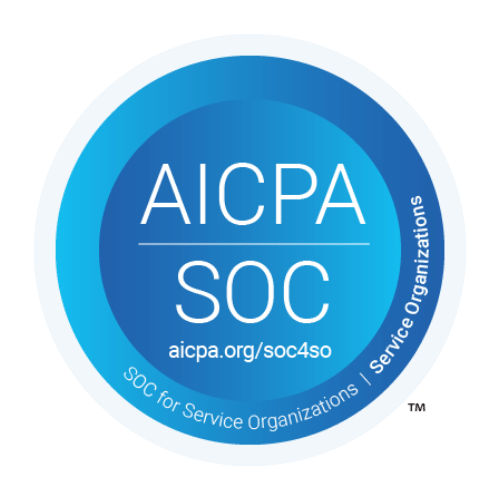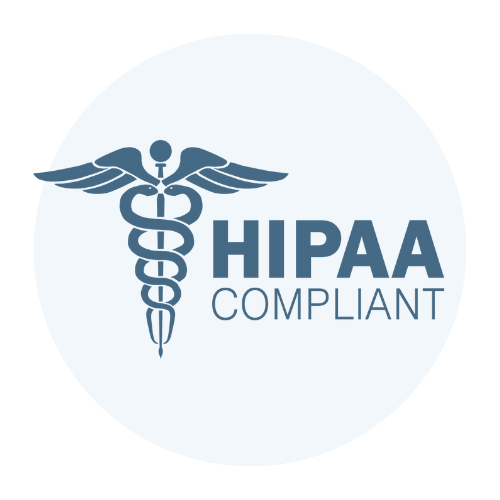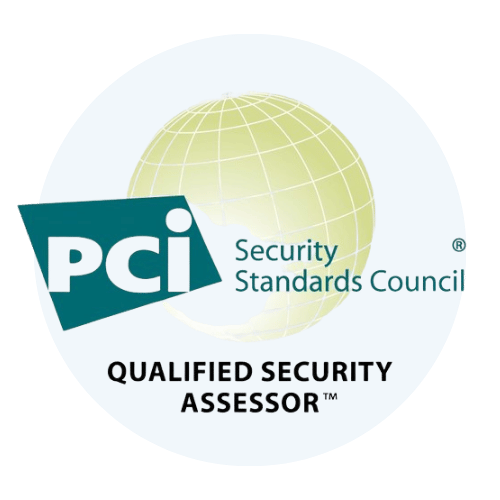Cybersecurity Areas Organizations Are Investing In

Many organizations have to juggle budget allocation. Expenditures on operations, marketing, and advertising are commonplace. These areas often take the lion’s share because they promise growth and visibility. But what about the less flashy, equally critical investments? Workforce development and cybersecurity are frequently overlooked, even though neglecting them can lead to costly consequences. To better understand this gap, we reached out to industry thought leaders. We inquired about the percentage of their IT spending that went toward cybersecurity and, more crucially, what cybersecurity-related priorities they were setting. Their insights reveal an ongoing shift in how organizations strengthen their digital defenses. Cybersecurity Areas Organizations Plan to Increase Spending in 1. Invest in Employee Training “We allocate 5% of our IT budget to cybersecurity. The area that we are most willing to invest in is employee training. It is a cost-effective measure that will benefit us in the long run. Once all employees become well-trained in cybersecurity, we won’t have to use extra cybersecurity tools. Employees will be able to handle any cybersecurity risks. They will quickly develop strategies to mitigate risks and detect threats. Additionally, they will recognize phishing attacks, which can come as emails, calls, and messages. As a result, third parties cannot hack the systems or access sensitive company data. With highly-trained employees in cybersecurity, the entire company’s security system will become stronger.” Jeremy Bogdanowicz, Founder & CEO, JTB Studios 2. Prioritize Threat Detection Tools “We allocate about 7% of our IT budget to cybersecurity, aligning with industry benchmarks. This allocation allows us to stay vigilant and adapt to our clients’ needs while covering essential areas like threat detection, compliance, and employee training. Different industries have unique risks, so we adjust our focus accordingly to provide thorough security tailored to each client’s risk profile. For example, in highly-regulated sectors like healthcare, we ensure that compliance measures are well-funded to meet legal standards and protect sensitive information. From my experience, investing in threat detection tools is crucial for any company, especially as cyber threats continue to increase in sophistication. Early on, we recognized the need for advanced threat detection because of real-world incidents we’ve managed—preventing potential breaches for clients that could have otherwise led to severe financial and reputational harm. Over the years, our investment in this area has proven invaluable, enabling us to catch vulnerabilities early and respond proactively. Working alongside industry professionals like Elmo Taddeo of Parachute, I’ve seen how important it is to have robust detection in place, as it often makes the difference between a quick fix and a larger crisis. Lastly, I can’t emphasize enough the value of employee training. One lesson I’ve learned is that even the most sophisticated systems can be undermined by simple human error. We’ve dedicated resources to help our clients implement regular security training programs to reduce such risks. For instance, a client in the real estate sector reported that, after implementing our training, phishing attempts targeting their team dropped significantly. Investing in your people is just as critical as investing in technology.” Konrad Martin, CEO, Tech Advisors 3. Focus on Endpoint Protection “Allocating about 15-20% of the IT budget to cybersecurity is typical for businesses that comprehend the critical importance of protecting digital assets. The allocation isn’t just about the sheer numbers but prioritizing areas with the highest vulnerability. Law firms, being prime targets for sensitive data breaches, should consider investing heavily in endpoint protection and intrusion-detection systems. These can mitigate potential threats before they wreak havoc. Investing in staff training is often overlooked but incredibly effective. Cyber threats are not just a technology problem; they’re a human challenge. Phishing scams exploit human behavior more than technical vulnerabilities. Conducting regular, engaging training sessions can empower staff to recognize and avoid security threats, adding an extra layer of protection to the firm’s digital defenses. This proactive approach reduces the likelihood of a breach from occurring in the first place. Always remember, investing in people can be as valuable as investing in any state-of-the-art technology.” Casey Meraz, CEO, Juris Digital 4. Dedicate Budget to Proactive Monitoring “In my experience, approximately 25% of the IT budget is dedicated to cybersecurity. Over time, I’ve recognized the value of this investment, especially as digital threats evolve. Much of this budget goes toward advanced threat detection and proactive monitoring, which are essential in identifying and neutralizing potential vulnerabilities before they can impact clients’ websites or data integrity. I’ve seen firsthand how early detection prevents substantial damage, both to our systems and our clients’ trust. Beyond that, I prioritize employee training and awareness. Investing in a well-trained team reduces human error, which is often a key factor in security breaches. By consistently educating my team on the latest security practices, we’ve managed to build a culture of vigilance, which has been invaluable. Compliance is also important, but I’ve found that a strong foundation in detection and training provides the most immediate and impactful defense in a cybersecurity strategy.” Brandon Leibowitz, Owner, SEO Optimizers 5. Emphasize Cloud Security and Training “Around 25% of our IT budget is allocated to cybersecurity. This aligns with our strategic emphasis on bolstering the cyber-defense systems of our digital teaching platform. We prioritize investments in areas like threat detection and employee training. Investing heavily in modern threat-detection systems is vital to proactively identify any potential threats. Approximately 15% of our cybersecurity budget is channeled here. We also understand the essential role of our staff in maintaining cybersecurity. Thus, about 10% of our budget goes for employee cybersecurity training, equipping them with the knowledge to avoid inadvertent security lapses. This combination of cutting-edge systems and robust cybersecurity awareness has proven successful in safeguarding our digital learning environment.” Lucas Tecchio, Head of Digital Content Creation, OPIT 6. Implement Zero Trust Architecture “Allocating funds to cyber-security is an essential, though sometimes overlooked, aspect of an IT budget. Typically, about 15-20% of our IT budget is dedicated to cyber-security. This might seem like a significant share, but it’s necessary to protect our digital assets and
10 Reasons Why Businesses Switch Compliance Providers

Compliance sits at the heart of every successful business no matter the industry and size. It’s the safety net, the backbone, the non-negotiable line of defense against risks that could disrupt operations or damage reputations. Yet not all compliance providers offer the same level of support or expertise. Selecting a provider that aligns with your business needs isn’t just important; it’s essential. Ineffective partnerships may lead to difficulties, inefficiencies, and even compliance gaps. The correct one can provide peace of mind, control risk, and streamline procedures. So why do businesses change partners? We spoke with business leaders to understand the tipping points that drive them to seek better solutions. Business Leaders on What NOT To Look For In Compliance Partners 1. Doesn’t Prioritize Cutting-Edge Technology and Custom Solutions “Engaging a new cybersecurity partner hinges upon clear differentiators and value propositions that align with our unique needs and objectives. As a SaaS business owner, I prioritize partners offering cutting-edge technology and robust data protection. It’s crucial that the partner demonstrates a proactive approach to threat detection and offers customizable solutions to fit our specific architecture. Trust and proven expertise in handling data privacy compliance are non-negotiables. A partnership needs to deliver tangible improvements in threat mitigation and operational efficiency; cost-effectiveness is a critical factor as well. The ability to adapt quickly in an ever-evolving digital landscape and having a track record of innovation would make me seriously consider switching. Their capacity to integrate seamlessly within our existing systems without disrupting our operations is equally vital.” Valentin Radu, CEO & Founder, Blogger, Speaker, Podcaster, Omniconvert 2. Fails to Predict and Respond to Industry-Specific Threats “A cybersecurity partner must do more than just protect us from basic threats. They also need to know about and be able to predict threats unique to our industry, especially since data in fuel logistics is very sensitive. If a partner isn’t actively moving their plans forward, I might look for someone else. Methods that aren’t changing are a red flag. They must do regular, customized risk assessments and give us information that we can use in our business. It helps to have experience in related fields, but being quick to respond is more important. One experience showed us how important it is to have partners who can step in right away. Partners who don’t feel the need to act quickly risk downtime and lost revenue, which no company can afford.” Eliot Vancil, CEO, Fuel Logic 3. Lacks Proactive Risk Management and Quick Adaptability “As a leader in healthcare IT, I’ve often seen the importance of robust cybersecurity in protecting sensitive patient data. One compelling scenario was during the adoption of cloud solutions, where a healthcare provider feared data breaches amidst the transition. By partnering with a firm like ours, which offers advanced encryption and continuous security updates, they not only safeguarded their data but also reduced security incidents by 50%. When deciding to switch cybersecurity partners, I prioritize those who provide proactive risk management and quick adaptability to evolving threats. For instance, a hospital we consulted employed regular cybersecurity assessments and disaster recovery plans, which resulted in a marked decrease in downtime and improved reliability. These strategies not only protected patient information from breaches but also minimized potential fines associated with non-compliance. In another case, outsourcing IT needs led a clinic to experience lowered expenses by opting for managed IT services custom to their needs, allowing them to focus budget more efficiently on patient-care improvements. Such concrete benefits drive my decision-making process when evaluating potential partners in cybersecurity.” David Pumphrey, CEO, Riveraxe LLC 4. Doesn’t Excel in Proactive Threat-Hunting “When thinking about switching or engaging a new cybersecurity partner, one overlooked factor is their approach to proactive threat-hunting. Many providers offer standard reactive measures like firewalls and antivirus, but a partner who excels in proactive threat identification is a game changer. Proactive threat-hunting involves actively seeking out vulnerabilities and potential threats before they become a problem. It’s not just about waiting for alerts, but anticipating attacks based on patterns and behaviors. This not only boosts security, but also ensures your system is robust and ready to handle unforeseen challenges. A remarkable example was when a healthcare client’s systems were being intermittently compromised, and there were no clear indicators from their existing security setup. A new cybersecurity partner was brought in, one that specialized in proactive threat-hunting. They utilized tools to analyze user behavior and network traffic patterns, uncovering a sophisticated threat actor that had gone unnoticed. This approach not only resolved the immediate issues, but also empowered the client with insights to prevent future incidents. Engaging a cybersecurity partner who prioritizes this approach can make the critical difference between a secure system and one that is constantly playing catch-up.” Casey Meraz, CEO, Juris Digital 5. Lack of Real-Time Threat Detection and Transparency “Switching to a new cybersecurity partner would come into consideration if we saw a gap in responsiveness or adaptability to emerging threats. In the gaming industry, where the volume and nature of data require constant vigilance, a partner who can’t keep up with advanced threats or who lacks proactive monitoring would be a major risk. A new cybersecurity partner offering real-time threat detection, rapid incident response, and a deep understanding of our industry’s unique security challenges would immediately stand out. We also look for transparency in reporting and ongoing communication. Knowing that our cybersecurity partner not only reacts but anticipates potential risks is invaluable, as is a commitment to evolving with the latest security technologies. Ultimately, a partner who demonstrates both technical expertise and a proactive approach to cybersecurity makes all the difference. ” Marin Cristian-Ovidiu, CEO, Online Games 6. Neglects Advanced Threat-Detection and Regulatory Compliance “Key Factors for Switching Cybersecurity Partners: Advanced Threat-Detection Capabilities: Since cyber threats are always changing, companies can be left open to attack if their security steps are out-of-date or not proactive. If a partner doesn’t react to new threats or doesn’t use AI to find and stop them,
Third-Party Cyber Risk Assessment: Strategies for Comprehensive Security Management
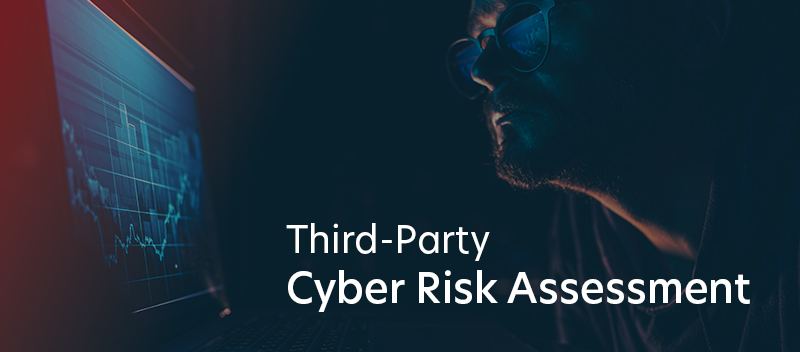
Third-party cyber risk assessment is the practice of evaluating the security measures, vulnerabilities, and potential threats posed by your external vendors and partners. Why does this matter? Third-party vulnerabilities can expose sensitive data. Non-compliance with regulations could lead to fines. A single weak link in your vendor chain may result in costly breaches. Understanding third-party cyber risk is no longer optional for procurement managers, risk professionals, and C-suite executives — it’s a business imperative. This article outlines key challenges, like managing vendor risks and evaluating security postures, while offering actionable strategies to safeguard your organization. Understanding Third-Party Cyber Risk Some of the most common types of third-party risks include: Data breaches: Vendors may have access to sensitive information that could be exposed through weak security systems. Compliance risks: Third parties failing to meet regulatory standards can put your organization at risk of costly penalties. Operational disruptions: A vendor experiencing downtime from a cyberattack can directly impact your critical services. The consequences of unmanaged vendor risk are extensive and extend far beyond financial losses. Companies may face legal repercussions, damage to their brand, and infractions that erode customer trust. Your entire cyber security posture might be weakened by ignoring third-party risks, leaving you more open to attacks. Effectively recognizing and managing vendor risk improves your security plan and fortifies your defenses against cyber attacks. For more on our Third-Party Risk Assessment services, Click Here The Third-Party Cyber Risk Assessment Process Managing third-party cyber risks requires a well-defined strategy. A robust risk assessment process helps minimize vulnerabilities and ensures vendors meet necessary security standards. Here’s how it works: 1. Initial Risk Assessment Start by conducting a detailed risk assessment to evaluate each vendor’s cyber security posture and potential vulnerabilities. Key steps include: Identifying security gaps in their processes and systems. Assessing compliance with industry regulations and standards. Evaluating how a vendor’s risks could impact your operations. This first step provides a clear understanding of whether a vendor aligns with your security requirements. 2. Vendor Selection and Onboarding Security must be central to the vendor selection process — not just cost or convenience. Shortlist vendors that meet your organization’s specific risk requirements. During onboarding, set expectations for data protection, compliance, and incident response. Ensure contracts clearly define security obligations and performance benchmarks. A secure onboarding process lays the groundwork for a strong partnership. 3. Continuous Monitoring Third-party risks evolve, so monitoring must be ongoing. Conduct regular audits and reviews of vendor performance. Use automated tools to identify emerging risks or gaps in compliance. Maintain an open dialogue with vendors to address issues proactively. With consistent vigilance, a well-executed risk assessment strategy fortifies your organization’s defenses and strengthens vendor relationships. Key Components of a Third-Party Risk Assessment Conducting a thorough third-party risk assessment requires a combination of strategies to evaluate vendors effectively and mitigate potential threats. Below are the primary components to include in your process: 1. Security Questionnaires Security questionnaires provide an essential snapshot of a vendor’s cybersecurity practices. These tools collect critical details, including: Data encryption protocols. Incident response plans. Employee training programs. By using security questionnaires, you can identify whether a vendor meets your standards and flag any security gaps early. It’s an efficient way to assess their preparedness before collaborating. 2. Penetration Testing Penetration testing involves simulating real cyberattacks to find weaknesses in a vendor’s systems. This proactive method identifies weaknesses that security questionnaires could miss. Frequent testing guarantees that suppliers satisfy the robustness required in today’s cyber environment and remain resilient against evolving threats. 3. Risk Scoring Models A structured risk scoring model helps quantify the risk that each vendor poses. Key factors to evaluate include: Compliance history. System vulnerabilities. Past incidents or breaches. With risk scoring, you can rank vendors by priority, allowing your team to focus on the highest risks while still effectively monitoring lower-risk parties. 4. Compliance Checks Ongoing compliance checks verify that vendors adhere to necessary regulations and industry standards. In addition to ensuring ethical conduct, this measure reduces legal risks. Conduct frequent audits to adjust to evolving laws or regulations and make compliance a constant endeavor. Using a combination of these tools will ensure that your third-party risk assessment remains accurate, protecting your organization and its partnerships. Best Practices for Third-Party Risk Management An effective Vendor Risk Management (VRM) strategy requires a proactive approach and clear structure. Here are three best practices to enhance your efforts: 1. Establishing a Dedicated VRM Committee Creating a dedicated committee ensures accountability and consistency in managing vendor risk. Key responsibilities of this group should include: Defining clear protocols for risk mitigation. Regularly reviewing VRM policies. Collaborating across departments to address risks effectively. A structured committee allows your organization to stay focused and prepared. 2. Implementing Automated Monitoring Tools Automation is essential for managing third-party risks efficiently. By using monitoring tools, you can: Track vendor performance in real-time. Receive alerts for changes in compliance or emerging threats. Streamline data collection for risk assessments. These tools help reduce manual effort while improving overall accuracy. 3. Regular Audits and Assessments Ongoing audits confirm that vendors meet their contractual obligations and maintain robust security practices. Consider scheduling periodic reviews that focus on the following: Evaluating the success of current risk mitigation efforts. Identifying new risks stemming from operational changes. Ensuring compliance with updated regulations. Maintaining regular oversight may strengthen your VRM framework’s resilience and protect partnerships and operations. By implementing these procedures, your company reduces weaknesses and promotes trust. Strategies for Mitigating Third-Party Cyber Risks Below are key approaches to enhance your third-party cyber security efforts: A. Contractual Safeguards Contracts are your first line of defense against potential risks. Include clear and enforceable clauses that define critical aspects, such as: Minimum security requirements. Data handling protocols. Incident response obligations. By outlining expectations upfront, you ensure vendors are accountable for maintaining strong cyber security measures. B. Incident Response Planning An effective incident response plan prepares both your organization and vendors for handling cyber threats quickly and efficiently. Best practices include: Establishing
FedRAMP Compliance: A Detailed Checklist for Cloud Service Providers
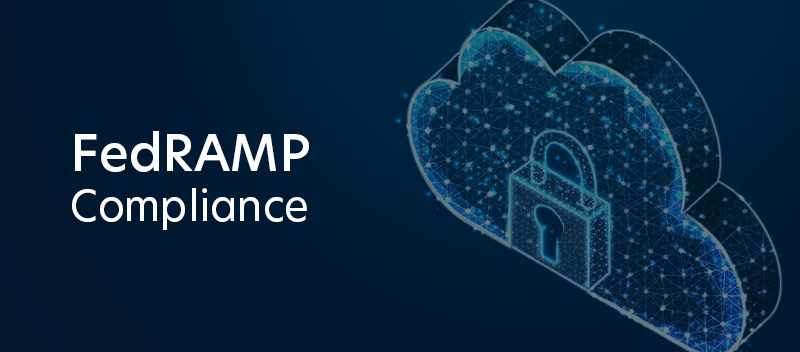
FedRAMP compliance is a key milestone for cloud service providers aiming to work with government agencies. But the process isn’t simple. FedRAMP requires that providers adhere to specific standards for risk management, monitoring, and cloud security. To simplify your path to compliance, this guide offers: A detailed checklist of FedRAMP requirements Practical insights into the authorization process Best practices for maintaining compliance Whether you’re starting out or renewing your authorization, this guide clears the path forward. Understanding FedRAMP Requirements Successfully navigating FedRAMP starts with understanding its core requirements. These include conducting a FIPS 199 assessment, implementing security controls based on impact levels, and meeting extensive documentation needs. Here’s a closer look at each: 1. FIPS 199 Assessment The process begins with a FIPS 199 (Federal Information Processing Standards) assessment. This step helps categorize information systems based on their confidentiality, integrity, and availability. Each system is rated as low, moderate, or high impact, depending on the potential damage a security breach could cause. This designation determines the level of security controls required. 2. Security Controls Based on Impact Levels Once the system is categorized, it’s time to implement the necessary security controls. These controls outline safeguards for cloud providers. For example: Low-impact systems require fewer controls, focusing on basic data protection. Moderate-impact systems demand more robust measures to safeguard sensitive data. High-impact systems need the most stringent controls, as they handle highly confidential or critical information. Understanding which controls apply to your system is crucial to avoid wasted time and effort. 3. Documentation Requirements FedRAMP mandates detailed documentation of your security practices. This includes preparing a System Security Plan (SSP) outlining your implementation of security controls, as well as any supporting artifacts. Thorough documentation demonstrates compliance and readiness for the authorization process. By clearly understanding these requirements upfront, cloud service providers can streamline their approach, avoid pitfalls, and set the foundation for successful FedRAMP authorization. For more on our FedRAMP compliance services, Click Here The FedRAMP Authorization Process Cloud Service Providers (CSPs) pursuing FedRAMP authorization can follow one of two pathways, each designed to meet federal security standards. While the Agency Authorization focuses on tailored agency needs, the Joint Authorization Board (JAB) process allows broader government use. Both require navigating FedRAMP’s 4 phases and rigorous timelines. Agency Process vs. JAB Process – Agency Process This route involves working with a federal agency to secure an Authority to Operate (ATO). It’s ideal for CSPs with a specific agency sponsor or niche requirements. – JAB Process Overseen by the DoD, GSA, and DHS, the JAB pathway issues a Provisional ATO (P-ATO) for systems with broader government appeal. It’s highly selective, accepting only about 12 CSPs annually. Steps in Each Process – Agency Process Partnership Establishment – Secure agency sponsorship and align on expectations. Authorization Planning and Security Package Development – Prepare key documentation like the System Security Plan (SSP). Assessment – Undergo a full review by a Third Party Assessment Organization (3PAO). Authorization and FedRAMP Compliance – Obtain agency ATO after risk analysis. Continuous Monitoring – Submit regular vulnerability scans and updates. – JAB Process FedRAMP Connect – Compete for prioritization based on system impact. Readiness Assessment – Ensure baseline compliance with a 3PAO. Full Security Assessment – Conduct thorough testing of systems and controls. JAB Authorization Process – Receive a reusable P-ATO after JAB review. Continuous Monitoring – Maintain compliance with monthly submissions. Timelines and Expectations Phase 1 (System Development): Varies; preparation with NIST 800-53 controls is critical. Phase 2 (Agency Sponsorship): Unpredictable due to agency-specific timelines. Phase 3 (Security Assessment): Typically spans 7–10 weeks. Phase 4 (Agency and PMO Review): Takes 2–6 months, depending on queue size and revisions. FedRAMP Compliance Checklist Successfully navigating FedRAMP compliance requires a structured and deliberate approach. Breaking the process into clear steps can help CSPs manage the complexities and stay on track. Here’s a checklist to guide you: Initial Documentation Compilation Start by assembling all essential documents. Think of this as laying the groundwork for compliance. System Security Plan (SSP) – A comprehensive guide to your system’s security design and controls. System inventory – A detailed outline of hardware, software, and configurations. Support documentation – Policies, procedures, and diagrams that illustrate your environment. The more accurate and complete your documentation, the fewer hurdles you’ll face during assessments. Gap Analysis Before moving forward, take the time to perform a gap analysis. This critical step identifies areas where your controls might fall short of FedRAMP standards. Analyze security controls and operational processes. Focus on areas like incident response plans and encryption standards. Bring in advisors or specialists to avoid missing key compliance requirements. A thorough gap analysis lets you address issues now, saving costly delays down the line. Security Assessment Once gaps are closed, it’s time for a security assessment with a 3PAO. This is where your system is tested inside and out. Vulnerability scans and penetration testing will expose weaknesses. Control implementations are validated to ensure they meet FedRAMP’s requirements. Regular communication with the 3PAO can smooth this process and minimize surprises. Plan of Action and Milestones (POA&M) After the assessment, map out fixes with a POA&M. Detail remediation steps for each issue uncovered. Assign responsibilities and set realistic deadlines. Use the POA&M as a living document to track progress and continuously improve. Following this checklist ensures a well-prepared and efficient path to FedRAMP compliance. Best Practices for Achieving FedRAMP Authorization Securing FedRAMP authorization is about building a reliable, secure cloud service offering. Following best practices can streamline your efforts and increase your chances of success. Here’s what to focus on: Implement Strong Security Controls Proactively aligning your system with NIST 800-53 controls is a critical first step. Strong security doesn’t happen by accident. Use encryption to protect sensitive data at rest and in transit. Implement multi-factor authentication (MFA) across your environment. Regularly review and update access control policies to minimize risks. A defense-in-depth approach will not only meet FedRAMP requirements but also strengthen your overall cybersecurity posture. Conduct Regular Internal Assessments Waiting until an
Navigating NIST 800 Series: Comparing 800-53 and 800-171 Security Standards
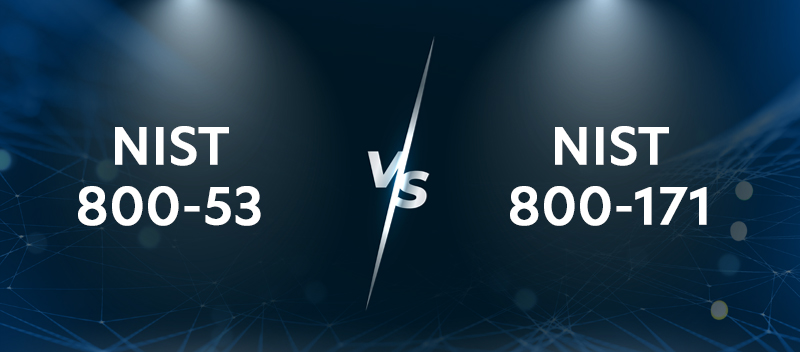
The NIST 800 series provides an essential foundation for enhancing cybersecurity procedures in all sectors. Among its key publications, NIST 800-53 and 800-171 often leave organizations questioning their differences and specific applications. Frankly, sensitive data protection requires both standards, but choosing the right one can be challenging. Is your company having trouble deciding which standard to use or having trouble putting its standards into practice? This guide breaks down the nuances of 800-53 and 800-171, offering a clear side-by-side comparison. By being aware of these differences, you’ll be in a better position to improve compliance plans and successfully safeguard important data assets. Understanding NIST 800-53 Federal information systems are secured using the fundamental architecture provided by NIST 800-53. Its goal is to standardize rules that protect data availability, confidentiality, and integrity. Agencies, contractors, and service providers are among the organizations that rely on this approach to efficiently manage risks in federal ecosystems. Key Features of NIST 800-53 Scope: This framework is specifically designed for federal information systems and those working directly with them. Number of Control Families: NIST 800-53 includes 20 control families. These cover essential areas like access control, incident response, risk assessment, awareness and training, security assessment, and more. Detailed Guidance: Each control is highly detailed, enabling organizations to customize their security strategies to meet specific risks and operational needs. Why Compliance Matters Compliance with NIST 800-53 is mandatory for federal agencies and their partners. Legal compliance is just the tip of the iceberg as it protects sensitive data and avoids costly penalties. The framework’s thorough approach creates a solid security baseline and ensures that the organization is resilient in the face of new and emerging threats. For more on our NIST penetration testing services, Click Here Understanding NIST 800-171 NIST 800-171 was crafted to secure Controlled Unclassified Information (CUI) that is stored or processed in non-federal systems. Its purpose is to ensure such organizations meet stringent data security requirements when handling CUI on behalf of the federal government. Key Features of NIST 800-171 Scope: Focuses on protecting CUI within non-federal systems. Number of Control Families: Encompasses 17 families of security requirements. These include Planning, System and Services Acquisition, Supply Chain Risk Management, Security Assessment and Monitoring, and more. Number of Security Requirements: Includes 110 security requirements designed to establish a solid baseline for data protection. Why Compliance Matters Compliance with NIST 800-171 isn’t always mandatory unless dictated by contracts like those under the Defense Federal Acquisition Regulation Supplement (DFARS). Compliance with NIST SP 800-171 is not always mandatory unless specified by contracts, such as those under the Defense Federal Acquisition Regulation Supplement (DFARS). However, there is a broad spectrum of entities that generally need to comply to ensure the protection of controlled unclassified information (CUI). Entities requiring compliance with NIST SP 800-171 include: Government Contractors for agencies like the Department of Defense (DoD), General Services Administration (GSA), and National Aeronautics and Space Administration (NASA). Educational and Research Institutions that work with U.S. federal data or receive federal funding, grants, or research contracts. Service Providers in industries such as defense contracting, financial services, healthcare data processing, web hosting, communications, and systems integration. Manufacturers and Consultants holding contracts with U.S. federal agencies that involve access to or handling of CUI. Logistics and Supply Chain Providers supporting government facilities or operations, particularly those connected to defense agencies. Complying with NIST SP 800-171 is critical to safeguarding CUI within government-linked networks, which strengthens overall national security. Organizations working specifically with the DoD and handling CUI must also adhere to DFARS 252.204-7012 and NIST SP 800-171, regardless of contract value or size. Failure to comply can result in significant consequences, such as losing contracts or being disqualified from future bids. Additionally, organizations must notify the DoD Chief Information Officer within 30 days of receiving a contract if they cannot meet specified compliance requirements. This notification must detail areas of non-compliance. Beyond contractual risks, non-compliance can compromise an organization’s reputation and operational integrity. Key Differences Between 800-53 and 800-171 While NIST 800-53 and NIST 800-171 aim to enhance security, their differences lie in their purpose, audience, and implementation requirements. Here’s a breakdown of their key distinctions: 1) Target Audience NIST 800-53: Designed for federal agencies and organizations directly operating within federal information systems. NIST 800-171: Tailored for non-federal entities handling Controlled Unclassified Information (CUI), such as contractors or third-party providers under agreements like DFARS. 2) Scope of Application 800-53: Broadly applies to federal information systems, covering all aspects of security management and operations. 800-171: Focuses specifically on protecting CUI within non-federal systems, providing a more streamlined set of requirements tailored to external partners. 3) Number and Complexity of Controls — NIST 800-53: Contains over 1,000 security controls divided into 20 control families. Offers highly detailed guidance and customization options for a comprehensive approach to data protection and risk management. — NIST 800-171: Features 110 requirements across 17 families, addressing key areas like planning, supply chain risk management, and security monitoring. Simplifies implementation while ensuring the fundamental protection of CUI. Compliance Requirements Mandatory vs. Optional: Compliance with NIST 800-53 is mandatory for federal agencies, with non-compliance leading to severe penalties. NIST 800-171 compliance is both contract-dependent and mandatory for some, failing to meet these standards can result in contract loss or legal action. Level of Detail: 800-53 enforces detailed controls, while 800-171 focuses on high-level security goals. Summary Both frameworks are essential in their respective domains. NIST 800-53 delivers comprehensive safeguards for federal systems, while NIST 800-171 provides organizations handling CUI with a focused approach to meet critical security expectations. Combined, they strengthen the overall cybersecurity landscape. When to Use 800-53 vs. 800-171 Choosing between NIST 800-53 and NIST 800-171 depends on your organization’s role and the type of information you handle. While both frameworks aim to strengthen security, their application scenarios vary. Scenarios for Using NIST 800-53 Federal Information Systems: NIST 800-53 is mandatory for federal agencies managing sensitive government systems and data. Comprehensive Cybersecurity Programs: Agencies or organizations seeking an expansive
HIPAA Compliance: Understanding Standard Transactions and Data Storage Requirements

Protecting sensitive patient information isn’t just a priority in healthcare; it’s a legal obligation. HIPAA compliance ensures that healthcare providers, health plans, and business associates handle data with care and in line with strict regulations. Yet, while the importance of compliance is clear, understanding exactly what’s required isn’t always so simple. Concerns about standard transactions? Are you unsure about the best way to keep electronic health records? Due to these difficulties, businesses may be at risk of data breaches or significant fines for non-compliance. Without clarity, patient trust and the stability of your operation hang in the balance. This article will break down HIPAA’s key expectations, focusing on standard transactions and secure data storage requirements. We’ll provide practical tips for maintaining compliance, identify common missteps that could put your organization at risk, and leave you with resources to simplify your compliance process. Understanding HIPAA Regulations HIPAA, or the Health Insurance Portability and Accountability Act (HIPAA) of 1996, was established to protect patient health information while empowering individuals with more control over their personal data. It’s a legal framework designed to ensure that sensitive information is handled with the utmost care and security. — Privacy Rule The Privacy Rule governs the use and disclosure of Protected Health Information (PHI), which includes any information that can identify a patient and relates to their health, healthcare services, or payment for such services. This rule ensures that PHI is shared only when necessary — to enhance care, comply with legal requirements, or for other permitted purposes — while maintaining strict confidentiality. It emphasizes the “minimum necessary” standard, meaning that only the information needed for a specific purpose is used or disclosed. Furthermore, the Privacy Rule provides patients with significant rights, such as access to their medical records and the ability to request corrections if the information is inaccurate. It applies to covered entities, including healthcare providers, health plans, and healthcare clearinghouses, ensuring a consistent approach to safeguarding patient information. — Security Rule The Security Rule addresses electronic Protected Health Information (ePHI), which is PHI created, stored, transmitted, or received in electronic form. Unlike general PHI, which includes all formats—written, oral, and digital—ePHI requires specific digital security measures. To safeguard ePHI, the rule outlines three protections: Administrative safeguards: Policies and procedures along with training to manage data access and information security Physical safeguards: Controlling facility access and securing devices or workstations Technical safeguards: Encryption, secure passwords, and data transmission protocols Essentially, the Security Rule ensures that ePHI is protected whether it’s stored, accessed, or sent digitally. — Breach Notification Rule Mistakes happen, but HIPAA mandates how organizations respond when they do. The Breach Notification Rule requires covered entities and business associates to notify affected individuals if a breach compromises their PHI. Depending on the scope, covered entities and business associates may also need to inform the Department of Health and Human Services and, in some cases, the media. Timely reporting helps promote accountability and gives stakeholders the information they need to protect themselves. We have highlighted three major HIPAA rules, but take note that additional rules, such as the Enforcement Rule, Omnibus Rule, Transaction and Code Set Rule, and Unique Identifiers Rule, also contribute to creating a comprehensive framework to protect patient health information. For more information on our HIPAA Compliance services, Click Here Standard Transactions Under HIPAA One of the main elements of HIPAA’s administrative simplification requirements is standard transactions. These interactions pertain to categories of electronic healthcare information exchanges, including eligibility queries, payments, and claims. Every kind of transaction needs to adhere to a set format, guaranteeing accurate and efficient data transfer across systems. The goal? To create a unified approach that reduces administrative burdens while protecting sensitive patient information. What Are Standard Transactions? Under HIPAA, standard transactions are electronic activities commonly performed between healthcare organizations. These include: 837 – Claims and Encounter Information and Coordination of Benefits (COB): Involve submitting healthcare service claims to insurers for reimbursement and managing COB details 276/277 – Claims Status: Used to inquire about and respond to the status of submitted claims, enabling providers to track claim processing efficiently 270/271 – Eligibility Benefit Inquiry and Response: Allow organizations to verify a patient’s insurance coverage, benefits, and eligibility information 835 – Payment Remittance and Advice: Facilitate the exchange of payments, explanations of benefits (EOBs), and detailed claim transaction data between providers and payers 278 – Referral Certification and Authorization: Used to handle requests for treatment authorizations or specialist referrals, ensuring appropriate approvals are in place 834 – Health Plan Enrollment and Disenrollment: Manage the enrollment or disenrollment of individuals in health plans, streamlining membership updates 820 – Premium Payments: Enable the exchange of premium payment details between employers or other entities and health plans for accurate financial processing. Why Are Standard Transactions Important? Standard transactions are crucial because they simplify a complicated and sometimes disjointed system. Healthcare institutions would have difficulty correctly and safely transferring data without a defined method. Imagine the chaos of multiple systems trying to interpret information differently. Here’s why standard transactions matter: – Improved Efficiency The use of these standardized formats eliminates inconsistencies, making it easier for all parties — providers, payers, and clearinghouses — to communicate seamlessly. Standardized formats also save time by automating key processes like claims submissions and eligibility checks. – Enhanced Security By using HIPAA-compliant transaction standards, organizations ensure that sensitive patient data is encrypted and protected during exchanges. – Cost Reduction When processes are streamlined, organizations spend less on administrative overhead and paperwork. – Interoperability Standardization ensures that different systems can “speak the same language,” enabling smooth communication even among organizations using different platforms. Data Storage Rules When protecting patient information, how you store data is just as important as how you use or share it. HIPAA’s requirements for data storage are designed to ensure that PHI and ePHI remain confidential, accessible only to authorized personnel, and safeguarded against breaches. Whether you’re storing digital records or physical files, compliance with these requirements is non-negotiable. HIPAA Requirements for Data
Building Resilience Against Cyberattacks with Expert Penetration Testing Insights

Interviewer: Numerous businesses are struggling to keep up with the increasing sophistication of cyberattacks. An expert in cybersecurity joins me to help make sense of this growing problem and explain how penetration testing may help companies safeguard their assets. I appreciate you taking the time to talk today! Expert: Thank you for having me. Cybersecurity is such an important discussion these days, and I’m always happy to share insights that can help businesses stay ahead of threats. — Interviewer: To kick things off, what kinds of cyber threats are organizations dealing with most frequently right now? Expert: That’s a great place to start because understanding the threats is the first step to defending against them. One of the biggest issues right now is ransomware. Ransomware can lock down your data and systems and hold your company for ransom until you pay. Money and reputation can be lost. Then there’s phishing. It’s not a new threat, but attackers are refining their tactics. These emails are no longer filled with grammatical errors — they’re incredibly convincing. What’s worse is that it only takes one person to fall for it to create a huge problem for a company. We’re also seeing supply chain attacks. Attackers target third-party vendors or service providers to get to their target. Sneaky and effective. And, of course, zero-day vulnerabilities. Newly discovered flaws in software that attackers exploit before a patch is released. It’s a constant game of cat and mouse. — Interviewer: The risks may seem overwhelming. So, in what specific ways does penetration testing assist businesses in overcoming these obstacles? Expert: Penetration testing — or, as many call it, pen testing — is one of the best proactive measures an organization can take. It’s about mimicking the types of attacks that cybercriminals would use. These test your systems, networks, or applications. Penetration testing covers areas like external systems (think web-facing applications or servers) and looks for entry points that attackers might target. It is also good for testing internal vulnerabilities, simulating what would happen if an attacker got into your network. Cloud security is also a big deal for many organizations as they move to hybrid or full cloud infrastructures. Pen testing in this context identifies risks from misconfigured settings or exposed user permissions. Web application testing is important for applications that handle sensitive data, like login portals, eCommerce platforms, or HR systems. At the infrastructure level, penetration testing tests the network layers to make sure the foundational defense is holding up. — Interviewer: It sounds incredibly impactful. But beyond pinpointing vulnerabilities, why is it so important for organizations to make penetration testing a regular practice? Expert: Regular penetration testing has a few key benefits that go beyond the initial discovery process. For one, it ensures that your security systems stay effective over time. Threats evolve quickly, and what works today might not be enough tomorrow. Another big plus is discovering risks to your critical data. Many organizations assume their sensitive data is well protected, but without testing, you can’t be sure. Pen testing exposes the weaknesses that could be putting your most valuable assets at risk. It also shows how an attacker could get into your systems, old software, and weak passwords. More importantly, it shows you the whole security plan. For organizations with compliance requirements, pen testing is non-negotiable. These tests show that you are actively trying to find and reduce threats, which is required in industries like healthcare and finance, where you need to show continuous security efforts. Beyond compliance, however, regular testing gives you credibility with stakeholders, customers, and key partners. — Interviewer: You’ve made a great case for penetration testing. But these tests often generate so much data. How can organizations manage and prioritize the results effectively? Expert: That’s a fantastic question, and it’s something that many businesses struggle with initially. The key is to prioritize findings based on potential risk and impact. Start by focusing on critical vulnerabilities. These are the issues that could cause the most significant damage if exploited — like those that give easy access to sensitive customer data or critical systems. These must be addressed immediately. Lower-risk issues, while still important, can often be scheduled for future patches or updates during normal maintenance windows. Context is everything when it comes to prioritizing. For instance, a vulnerability in a rarely accessed server doesn’t need the same urgency as one affecting a customer-facing portal. It’s also helpful to align your remediation efforts with your business goals. For example, securing a system tied to revenue-generating operations will naturally take precedence over less consequential processes. Finally, don’t treat penetration testing as a one-and-done activity. Reassess after remediating to ensure fixes are effective and get into the habit of retesting routinely. Cybersecurity isn’t static; it’s a constant cycle of discovery and defense. — Interviewer: Could you elaborate on how TrustNet directly aids businesses in establishing more robust security postures? Expert: Absolutely. At TrustNet, we focus on providing a tailored approach to meet the unique needs of each client. Our services include External Penetration Testing, Internal Penetration Testing, Cloud Penetration Testing, Web Application Assessments, and Network Layer Testing. These cover a wide range of attack surfaces, so no potential weak spot is overlooked. When clients work with us, they can expect more than just a list of vulnerabilities. We test their defenses by simulating the attack paths an attacker would take. We find out if critical data is really at risk and what threats are lurking in the environment. We give them actionable recommendations and guidance on what to remediate first so they can use their resources wisely to tackle the biggest issues first. By working with TrustNet, organizations have a partner for the long haul. We know that successful cybersecurity is more than a quick fix – it’s ongoing and adaptive. — Interviewer: Do you have any final suggestions for companies wishing to strengthen their cybersecurity efforts before we finish up? Expert: If there’s one thing I want to emphasize, it’s
Overcoming ISO 27001 Challenges: Stories and Solutions from the Experts

Interviewer: Thanks so much for sitting down with us. ISO 27001 often feels like this huge, complex task for organizations. To start, can you walk us through the big picture? What are the real benefits of achieving ISO 27001 certification? Expert: Of course. ISO 27001 certification is more than just a “nice-to-have.” For starters, it’s recognized globally as the gold standard for an Information Security Management System, or ISMS. Having this certification not only shows that your organization is committed to protecting sensitive information, but it also builds trust. Whether it’s your clients, partners, or regulators, they’ll feel more confident in working with you. There’s also the competitive edge it gives you. Companies these days are actively vetting their partners’ cybersecurity practices. Being certified can open doors to deals and partnerships. Beyond that, ISO 27001 can save money in the long run. When your risks are managed properly, the chances of costly breaches or penalties shrink dramatically. And honestly, it just leads to smoother operations. — Interviewer: That’s a pretty strong case. But I know for many companies, the road to certification can feel seriously overwhelming. What are some of the most common obstacles you see businesses hit along the way? Expert: I hear that concern all the time, and it’s completely valid. One of the biggest challenges is just understanding where to start. ISO 27001 can seem intimidating with all its requirements, from identifying risks to documenting controls and aligning it all with your business objectives. It’s a lot. Cost is another big worry. Some organizations see the upfront effort as too expensive, hiring auditors, buying tools, and dedicating internal resources. It adds up, and not everyone immediately sees the long-term value. And here’s something else people might not talk about as often: compliance isn’t a one-time achievement. Organizations that do get certified sometimes struggle with maintaining it. You’ve got surveillance audits, updates to controls, and constantly evolving risks. Without a clear plan, staying compliant can turn into a real headache. — Interviewer: That brings us to my next question. Once a company does get certified, how can they stay on top of it? What’s the secret to maintaining ongoing compliance? Expert: The “secret,” if you will, is to make compliance a living part of your company culture. A certificate hanging on the wall isn’t enough. Every part of your team has to understand why security matters and what their role in it is like. Training here is key. It’s not a one-and-done thing; people need regular refreshers and updates. Another important piece is internal audits. These should be regular and methodical, catching issues before external auditors do. Also, tools can really help simplify tracking compliance. Imagine trying to handle all your risk assessments and controls in spreadsheets. It’s not impossible, but it’s way harder than it has to be. And documentation. Keep it updated. Businesses grow, processes change, and risks evolve. Your ISMS needs to reflect that, or you’ll struggle during the audits. Finally, don’t underestimate the value of a good partner. Companies like TrustNet can provide the guidance and expertise to make this an ongoing process rather than a scramble every time there’s an audit around the corner. — Interviewer: Speaking of partners like TrustNet, how exactly can working with an expert make such a difference for teams trying to meet ISO 27001 requirements? Expert: It makes all the difference. At TrustNet, we start with a comprehensive ISO/IEC 27001 Gap Assessment. This is where we essentially inspect the organization’s current security practices and highlight exactly where they stand in relation to the certification requirements. From there, we work with businesses to define their ISMS scope. We help with risk assessments and risk treatments. These are big undertakings on their own, but having a partner ensures things are handled methodically and without extra stress. Once certification is achieved, our support doesn’t stop. Surveillance audits are required to maintain certification, and we guide businesses through these, too. We do these to ensure continued compliance and adapt to any new risks that may arise. Oh, and I have to mention our TrustNavigator™ approach. It breaks the process into manageable pieces — planning, scoping, testing, and reporting. This way, organizations see clear deliverables and not just endless steps. I think what sets us apart is that we don’t see our work as just “getting the certificate.” Our goal is to set companies up for long-term success. — Interviewer: That explains a lot. Before we wrap up, are there any big picture trends or shifts you’re seeing with ISO 27001 these days? Expert: Of course. Implementations of cloud-based ISMS are growing rapidly. Cloud infrastructures are becoming more and more popular among businesses due to their strong security features and scalability. However, it is not without difficulties. Integrating ISO 27001 with data protection laws like GDPR adds an extra layer to consider. We’ve also seen a shift toward broader risk management. Companies are linking ISO 27001 compliance with larger enterprise risk management strategies. It allows them to tackle multiple compliance frameworks more efficiently. Automation is another one. Real-time monitoring tools take so much of the manual guesswork out of compliance. And something I always recommend? A phased approach. Instead of biting off everything all at once, breaking it up into smaller, actionable chunks helps organizations make real progress without feeling swamped. — Interviewer: I hear you; it’s about working smarter, not harder. For companies that are still hesitant, maybe because of costs or how complicated it seems, what advice would you give them? Expert: I’d tell them this… look beyond the initial hurdle. Yes, certification takes effort, but the peace of mind of knowing your business is secure? It’s priceless. Plus, with the way the cybersecurity landscape is evolving, clients and regulators are raising their expectations. Being ISO 27001-certified isn’t just a proactive move anymore; it’s rapidly becoming an expectation. Also, you don’t have to do it alone. Experts like our team at TrustNet can help make the process smoother. From
SOC 2 FAQs

1. What is SOC 2, and why is it important? 2. Who needs to undergo an SOC 2 audit? 3. What is the difference between Type I and Type II SOC 2 reports? 4. How long does a SOC 2 audit typically take? 5. Are SOC 2 audits accessible for businesses of all sizes? 6. What are the costs associated with a SOC 2 audit? 7. How can we prepare for a SOC 2 audit? 8. What are the Trust Services Criteria, and how does it apply to SOC 2? 9. What are the common criteria applied to SOC 2? 10. What is the SOC 2 controls list? 11. What are the benefits of achieving SOC 2 compliance? 12. Can we reuse existing security controls for SOC 2 compliance? 13. What happens after achieving SOC 2 compliance? 14. How frequently should you undergo SOC 2 audits to maintain compliance? 15. How do SOC 2 audits align with our compliance requirements, such as PCI DSS and ISO 27001? 1. What is SOC 2, and why is it important? SOC 2, or Systems and Organization Controls 2 compliance, is about meeting the standards set by the American Institute of Certified Public Accountants (AICPA) for managing customer data. This management is evaluated based on the five Trust Services Criteria (Security, Availability, Processing Integrity, Confidentiality, and Privacy) Achieving SOC 2 compliance signifies that a company has established robust data protection measures and adheres to them consistently and effectively. SOC 2 compliance assists businesses in setting up and maintaining stringent data protection standards, fostering confidence with their customers and stakeholders. 2. Who needs to undergo an SOC 2 audit? A wide range of service firms that receive, store, or process consumer data should consider conducting SOC 2 audits, particularly where proving a dedication to data security and compliance is crucial. Examples are: Healthcare: With the increasing digitization of patient records and medical data, healthcare providers and related service companies must ensure that they meet high data protection standards. Financial Services: Banks, investment firms, and payment processors deal with highly confidential financial information. SOC 2 compliance helps these entities demonstrate their dedication to protecting clients’ financial data. Cloud Computing Services: Cloud services need to have strong controls over data security, availability, and privacy because of their role in processing and storing enormous volumes of data. SaaS Providers (Non-Financial Impact): SaaS platforms that may not impact financial reporting directly but handle customer data, requiring stringent controls over data security and privacy. SOC 2 audits are essential for businesses in sectors where compliance, data security, and privacy are critical. 3. What is the difference between Type I and Type II SOC 2 reports? Both SOC 1 and SOC 2 audits produce Type 1 and Type 2 reports, each of which has a distinct purpose in evaluating the internal controls of a service company. SOC 2 Type 1: SOC 2 Type 1 focuses on a point-in-time assessment. Assesses the design of controls related to security, availability, processing integrity, confidentiality, and privacy. Verifies that the service organization’s systems are designed to meet the relevant Trust Services Criteria at a specific date. It is suitable for service organizations needing to prove their system controls’ design effectiveness at a particular time. SOC 2 Type 2: Evaluates over a period, typically a minimum of six months This examines the design and operational effectiveness of the service organization’s controls related to the Trust Services Criteria. Provides a more detailed and comprehensive view, offering assurance about the effectiveness of controls over time, not just their design. Best for organizations that want to demonstrate ongoing compliance and effectiveness in managing data according to industry best practices and standards. The choice between Type 1 and Type 2 will depend on the organization’s specific needs, its clients’ requirements, and regulatory obligations. 4. How long does a SOC 2 audit typically take? Phase 1 – Readiness Assessment: (3 to 6 Weeks) This initial stage involves both onsite and offsite evaluations. The aim is to assess the current state of your organization’s systems and controls. This readiness assessment allows the identification of potential gaps or weaknesses in areas such as documentation of policies and procedures, system configuration, audit trails, and usage of technical resources. This phase serves as a diagnostic tool to prepare your organization for the later stages of the audit. Phase 2 – Remediation: (2 to 8 Weeks) Following the initial assessment, this phase addresses the identified issues. This is the time to make the necessary changes to rectify the discrepancies in the readiness assessment. These modifications can involve using various technical resources, implementing new or revised procedures, creating or updating documentation of policies and procedures, altering system configurations, and ensuring the retention of audit trails by preserving evidentiary elements. This stage is crucial as it prepares the client for the final evaluation. Phase 3 – Assessment and Reporting: Type 1: (4 to 6 Weeks) Type 2: (7 months) This final stage requires an evaluation to demonstrate the rectifications’ effectiveness during the remediation phase. This includes a primary and secondary round of testing to ensure that the implemented changes have effectively addressed the previously identified gaps. The results of these tests are then documented in a detailed report. This report will determine whether the organization has successfully met the criteria for SOC 2 certification. It’s important to note that a SOC 2 audit isn’t just a one-off event but a perpetual data security commitment. Regular monitoring and ongoing improvements are essential in keeping up with compliance and protecting the interests of your stakeholders. 5. Are SOC 2 audits accessible for businesses of all sizes? Yes, SOC 2 audits are accessible for businesses of all sizes, contrary to the common misconception that they are only suitable for large enterprises. While the process can be resource-intensive, smaller businesses can achieve compliance by tailoring their approach to fit their specific needs and budgets. 6. What are the costs associated with a SOC
Leveraging AI in Cybersecurity with TrustNet
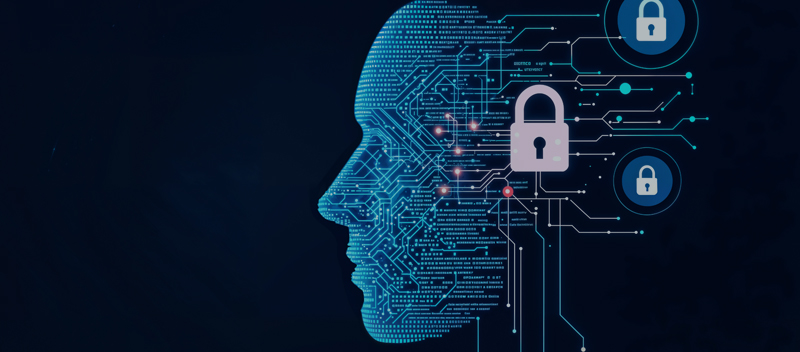
Thanks to Artificial Intelligence (AI), the days of passive approaches to data protection are gone. Imagine a security solution that not only recognizes behavior patterns and detects anomalies but also proactively prioritizes risks and identifies potential malware threats before they materialize. This is attainable because AI performs tedious tasks, reduces the possibility of human mistakes, and allows the usage of valuable resources on other, more strategic issues. In this article, we’ll delve into how TrustNet leverages AI to enhance cybersecurity, providing you with robust, intelligent protection in a rapidly evolving digital landscape. AI-Driven Threat Detection Online threats seem to evolve at the speed of light, leaving many organizations struggling to keep up. That’s where AI steps in as a game-changing ally. You might wonder how AI can detect threats faster and more accurately than traditional methods. Let’s break it down. Speed and Precision in Detection AI algorithms are akin to having a vigilant guardian that never blinks. They tirelessly sift through massive datasets, identifying threats with unparalleled speed and precision. This is vital because: Real-Time Monitoring: AI continuously scans your systems, catching threats as they appear rather than after the damage is done. Swift Response: By instantly recognizing potential threats, AI ensures your defenses are always a step ahead. Anomaly Detection and Behavioral Analysis Ever notice how sometimes things just don’t feel right? AI does too, but with data. It excels at spotting anomalies — those subtle, often overlooked indicators that something is amiss. Behavioral Baselines: By understanding what ‘normal’ looks like for your network, AI can detect when something deviates from this norm. Identifying Unusual Activities: Whether it’s an unexpected login at odd hours or an uncharacteristic surge in data transfer, AI flags these anomalies for further investigation. Why It Matters With AI handling the heavy lifting of threat detection, you gain: Peace of Mind: Knowing that potential threats are being monitored and managed in real-time. Resource Optimization: Allowing your team to focus on strategic initiatives rather than getting bogged down by routine checks. In essence, AI doesn’t just enhance threat detection; it revolutionizes it, ensuring your organization stays resilient in the face of ever-evolving cyber threats. To learn more about our AI-powered solutions, Schedule a Call today AI-Powered Incident Response It is paramount to respond quickly and effectively to cyber incidents. Here’s how AI can revolutionize your strategy: – Automation and Speed in Response Automating Processes: AI can be programmed to handle a myriad of routine tasks, such as sorting through alerts and conducting preliminary investigations. This not only saves time but also ensures that these tasks are carried out consistently and accurately. Accelerating Responses: Since artificial intelligence is capable of carrying out action plans within the shortest time frame possible, this drastically, if not totally, eliminates the chance for threats to inflict any damage for a long time. – The Power of AI-Driven Threat Hunting Proactive Defense: AI continuously monitors your network, actively seeking out potential threats. This proactive stance means that AI can identify and neutralize threats before they develop into serious incidents. Pattern Recognition: AI’s ability to spot patterns is one of its greatest strengths. This ability is particularly useful in detecting early signs of danger. Pattern recognition allows AI to process data quickly and find correlations that may suggest the occurrence of a security breach. – Benefits for Your Organization Reduced Human Error: By automating repetitive and mundane tasks, AI minimizes the risk of human errors, ensuring that responses are consistent and reliable. Scalable Solutions: AI solutions are inherently scalable, adapting to increased demands without compromising efficiency. This scalability ensures that as you expand, your security measures remain robust and effective. With AI-powered incident response, you are not just reacting to threats but actively managing and mitigating them. TrustNet’s AI-Powered Solutions At TrustNet, we are proud to offer cutting-edge AI-driven solutions that put you ahead of potential threats. One of our standout offerings, iTrust, embodies this commitment to advanced cybersecurity. iTrust: At the Forefront of AI-Powered Cybersecurity iTrust serves as your vigilant ally, meticulously assessing and controlling cyber threats. Accurate Cyber Risk Ratings: With iTrust, you receive precise cyber risk ratings powered by modern technology. These ratings are your guide to understanding your organization’s security status. In-Depth Risk Intelligence: iTrust offers a thorough analysis of risks and potential threats and attacks. This level of detail provides you with the necessary understanding to make appropriate decisions regarding your budget and information security policies. Automation and Advanced Machine Learning Our commitment to innovation is evident in iTrust’s core technologies: Automated Analytical Models: iTrust automates complex analytical processes, ensuring that risk assessments are timely and accurate. Sophisticated Machine Learning: At the heart of iTrust is a suite of advanced machine learning techniques. These tools are designed to handle and interpret large datasets effectively, giving you a clear picture of potential risks. Predictive and Real-Time Insights iTrust doesn’t just assess current risks; it also prepares you for the future: Identification of Vulnerabilities: Through cutting-edge data analysis, iTrust identifies vulnerabilities that might not be immediately visible, giving you a head start in addressing them. Predictive Insights: Beyond merely assessing the present, iTrust predicts future risks, enabling proactive threat management. Real-Time Risk Ratings: With iTrust, you won’t be left in the dark. Our algorithms provide real-time updates, reflecting the latest data to keep you informed and ready. Proactive Risk Management and Resource Allocation Harnessing the power of iTrust means transitioning from a reactive to a proactive cybersecurity stance: Proactive Risk Management: Armed with predictive risk ratings, you can prepare for threats before they materialize, significantly strengthening your defenses. Efficient Resource Allocation: Knowing possible future threats, you can better manage your resources by strategically allocating them to the most effective areas of cybersecurity. iTrust’s AI Assistant: Coming Soon We are currently working on implementing iTrust’s groundbreaking AI Assistant, set to revolutionize your cybersecurity efforts with real-time assistance and insights, and we aim to launch this feature in Q4 2024: Simplifying Data Interpretation: iTrust’s AI Assistant is designed to translate complex

